We may not have the course you’re looking for. If you enquire or give us a call on + 1-866 272 8822 and speak to our training experts, we may still be able to help with your training requirements.
Training Outcomes Within Your Budget!
We ensure quality, budget-alignment, and timely delivery by our expert instructors.

Looking to enhance your Drawing skills? Exploring various Drawing Styles can be an excellent strategy if you find yourself in a creative rut and eager to venture into uncharted territories. It not only refines your abilities to portray imaginative concepts but also contributes to the evolution of your distinct artistic style. Drawing Styles vary widely, and artists often develop unique approaches based on personal preferences, influences, and the medium they work with.
Drawing offers various styles to experiment with, and we have curated a list of captivating Drawing Styles for you to delve into and experiment with. Read more to learn more!
Table of Contents
1) Different Drawing Styles
a) Hyperrealism
b) Doodling
c) Photorealism
d) Fashion illustration
e) Cross-contour Drawing
f) Quick sketches
g) Minimalist Drawing
h) Cartoon Style
i) Line Drawing
j) Architectural Drawing
2) Conclusion
Different Drawing Styles
The following are the different Drawing Styles:
1) Hyperrealism
As a modern evolution of the photorealistic Drawing genre, hyperrealism aspires to achieve a level of realism that surpasses reality. The intricacy of hyperrealistic Drawings is so pronounced that discerning the medium used can be challenging. Engaging in hyperrealism is particularly fitting if you have a penchant for Drawing portraits. This style offers an opportunity to master the art of capturing facial features with unparalleled detail, ultimately resulting in images that are visually striking and capable of evoking powerful emotions.

Hyperrealism stands at the pinnacle of technical skill in Drawing. Artists in this style aim to create works so detailed and accurate that they can be mistaken for high-resolution photographs. Every nuance, from skin texture to the play of light and shadow, is meticulously rendered to achieve awe-inspiring realism. Hyperrealistic artists employ techniques such as layering, blending, and precise shading to replicate the intricacies of their subjects.
Artists like Chuck Close and Audrey Flack have mastered the art of hyperrealism, creating pieces that challenge our perception of reality. Their works often feature portraits and everyday objects rendered with such precision that viewers are compelled to question whether what they see is a Drawing.
2) Doodling
Doodling represents an informal and spontaneous approach to Drawing, often crafted absent-mindedly to alleviate boredom during class. It encompasses rough depictions of objects, quick sketches of ideas, random marks, and other intuitive elements.
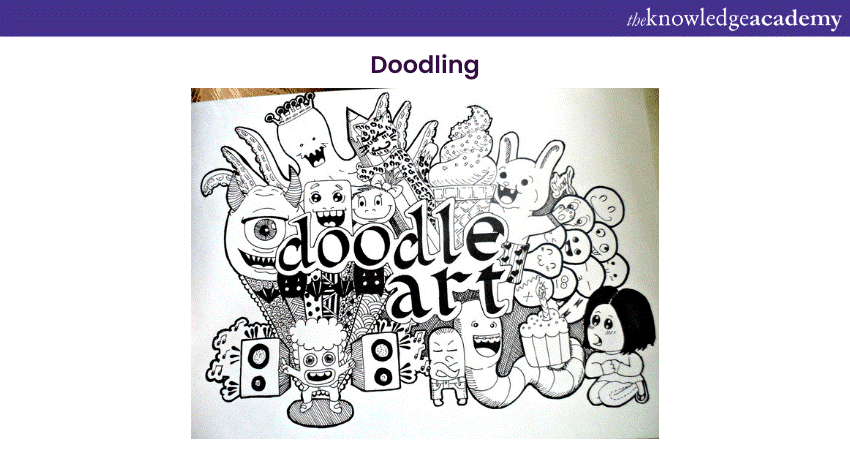
The possibilities with doodling are boundless, allowing for creative expression without constraints. Doodling is all about spontaneity and free-flowing creativity. Doodlers often create whimsical Drawings during meetings, lectures, or idle moments. The charm of doodling lies in its simplicity and the often-unplanned nature of the artwork. Artists who doodle find beauty in the imperfections, turning seemingly random lines and shapes into intriguing compositions.
Doodling is an art form accessible to everyone, regardless of skill level. It's a form of expression that often serves as a mental break, allowing individuals to unleash their creativity without the constraints of perfection. Despite its simplicity, the doodle can convey a wide range of emotions and ideas, making it a unique and cherished style.
3) Photorealism
Photorealism focuses on recreating images from photographs with astonishing accuracy. Artists in this style meticulously study and replicate photographs, aiming to achieve a level of detail that blurs the lines between Drawing and photography.

Photorealistic Drawings often require a deep understanding of light, shadow, and perspective. Artists like Chuck Close and Richard Estes are renowned for their photorealistic works that capture not only the visual details but also the emotional depth of the subjects. Photorealism is a bridge between the artistic and the photographic, with artists using traditional Drawing tools to mimic the precision of a camera lens.
Become familiar with creative thinking, problem-solving, and paradigms with our Animation and Design Training today!
4) Fashion illustration
Fashion illustration is a unique blend of art and design, capturing the essence of clothing and accessories. Artists in this style often work closely with the fashion industry, translating concepts and designs into visual representations.
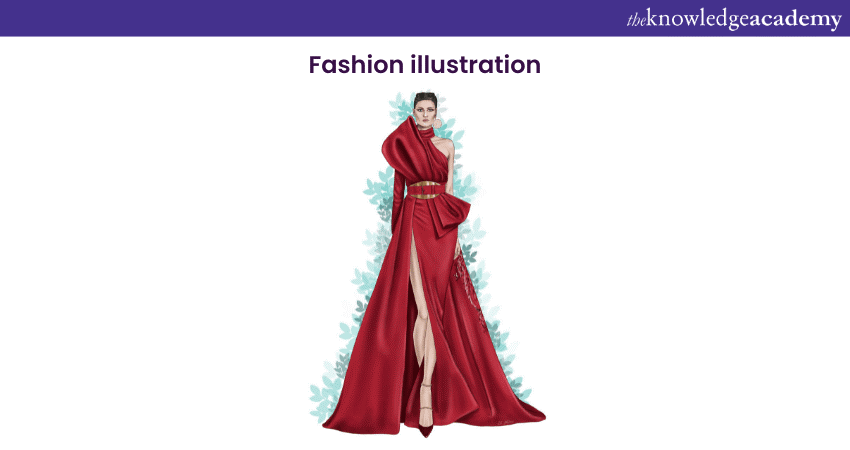
The emphasis is on showcasing the beauty and style of clothing, often with elongated figures and dynamic poses. Renowned fashion illustrators like David Downton and Rene Gruau have left an indelible mark on the fashion world through their illustrations. Their works go beyond mere representation; they elevate fashion to an art form, using expressive lines and bold strokes to convey the energy and movement of fabric and design.
5) Cross-contour Drawing
Cross-contour Drawing is a technique that involves Drawing lines that follow the curves and contours of the subject, giving the illusion of depth and three-dimensionality.

This style is particularly effective in conveying the form of objects or figures. Artists use hatching and cross-hatching to create shadows and highlights, enhancing the visual impact of the Drawing.
Cross-contour Drawing is a technical exercise and a means of understanding the subject's physicality. Artists carefully observe the contours of their subjects, using lines to convey not just the outline but the structure and volume. This style is often employed in academic Drawing classes to develop a strong foundation in understanding form.
6) Quick sketches
Quick sketches are spontaneous and expressive, capturing a subject's essence in a short time. Artists use rapid lines and minimal details to convey movement, emotion, and energy. This style is often associated with life Drawing sessions, where artists have a limited time to capture the pose and gesture of a model.

Quick sketches testify to the artist's ability to distil complex scenes into simple yet evocative Drawings. The emphasis is on capturing the moment's immediacy, whether it's a fleeting expression, a dynamic pose, or the play of light on a scene. Quick sketches are a valuable tool for artists to hone their observational skills and convey a sense of vitality in their work.
7) Minimalist Drawing
Minimalist Drawing embraces simplicity, using a minimal number of elements to convey a message or evoke a feeling. This style often involves clean lines, a limited colour palette, and a focus on negative space.

Artists like Ellsworth Kelly and Agnes Martin have mastered the art of minimalism, creating Drawings that invite contemplation and introspection.
Minimalist Drawings often rely on the power of suggestion, allowing viewers to fill in the gaps and interpret the work in their own way. The use of negative space becomes as important as the Drawn elements, creating a harmonious balance that resonates with the principles of minimalism. This style challenges artists to distil their concepts to the essentials, creating Drawings that are visually striking in their simplicity.
8) Cartoon Style
The cartoon style is characterised by exaggerated features, vibrant colours, and a playful, often humorous approach. This style is diverse and versatile, from beloved animated characters to political cartoons.
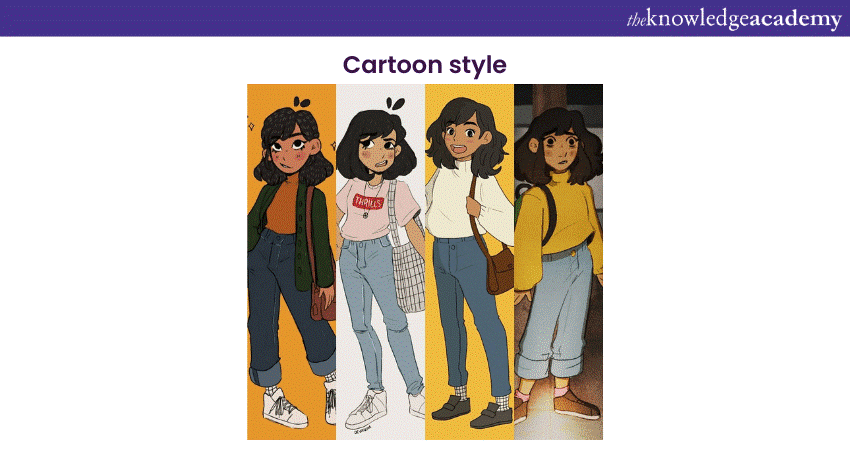
Cartoonists like Walt Disney and Chuck Jones have played a significant role in popularising this style, creating timeless characters that have become cultural icons.
Cartoon style is not bound by realism but thrives on the imaginative and whimsical. Artists in this style often use bold lines and expressive shapes to create characters that transcend reality. The exaggerated features contribute to visual storytelling, allowing cartoonists to convey emotions and narratives with a delightful sense of humour.
Learn how to use the Drawing Tools with Animation Masterclass!
9) Line Drawing
Line Drawing is a fundamental style that relies on the use of lines to create form and structure. Depending on the artist's intent, this style can be both expressive and precise. Line Drawings are often spontaneous, with artists using varying line weights to convey depth and detail.
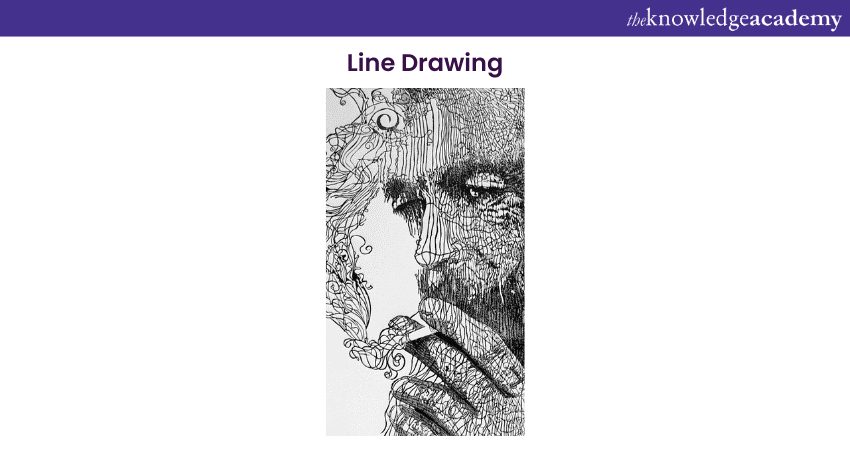
Pablo Picasso's contour Drawings are notable examples of the expressive possibilities of line Drawing. Line Drawings distil the essence of the form by focusing on the outline and essential features of the subject. Line Drawing is an excellent exercise for artists to develop a keen understanding of shape, proportion, and composition.
10) Architectural Drawing
Architectural Drawing is a specialised form of art that focuses on the visual representation of buildings and structures. Architects and artists in this style use technical precision to convey design concepts, details, and spatial relationships. Architectural Drawings bridge imagination and construction, providing a visual roadmap for realising architectural visions.
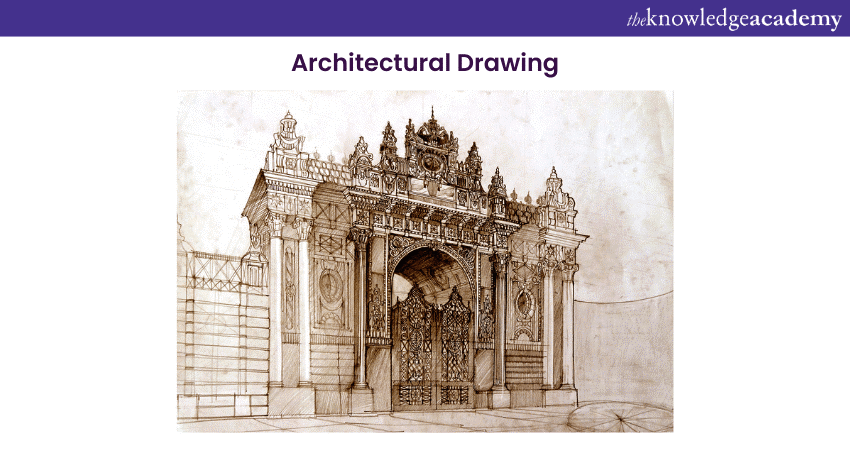
Architectural Drawings encompass a range of styles, from detailed blueprints to artistic renderings. Artists in this field must understand design principles and possess the technical skills to communicate complex spatial relationships. Architectural Drawing is not just a representation; it's a crucial tool in the creative process of bringing structures to life.
11) Line Art
Line Art is a style that uses simple, unbroken lines to create intricate and elegant designs. Often black and white, line art can be found in illustrations, tattoos, and decorative elements. This style relies on the purity of form and the precision of line to convey a sense of beauty and sophistication.
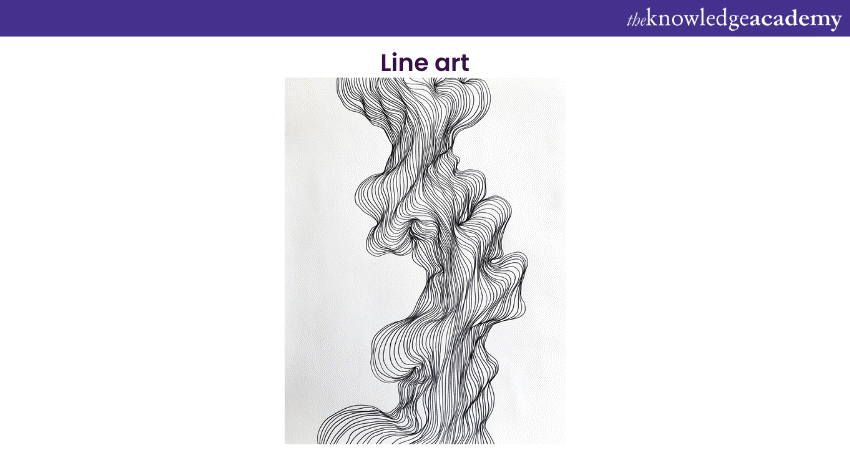
Line Art often involves intricate patterns and repetitive motifs, creating visually stunning compositions. Artists in this style focus on the artistry of the line itself, using it to sculpt shapes and define spaces. Line Art can evoke a sense of timelessness, transcending cultural and temporal boundaries to create classic and contemporary Drawings.
12) Sketching
Sketching is a broad and versatile style encompassing a wide range of approaches. From loose, gestural sketches to detailed and refined studies, sketching is the foundation of many artistic endeavours. Artists use Drawing as a means of exploration, experimentation, and communication. Sketches provide a glimpse into the artist's thought process, capturing moments of inspiration and spontaneity.

Sketching is not confined to any specific subject or style; instead, it's a tool for artists to capture ideas and observations in a fluid and immediate way. Sketches can serve as the starting point for more polished works or stand alone as expressive and unfinished pieces. Sketching is a practice that encourages artists to embrace imperfection and enjoy the process of artistic exploration.
13) Anamorphic
Anamorphic Drawing involves distorting the image to appear normal when viewed from a specific angle or with the help of a reflective surface. This style adds an element of surprise and illusion, challenging the viewer's perception. Street artists like Julian Beever and Edgar Mueller have gained international acclaim for their mind-bending anamorphic creations that defy reality's laws.
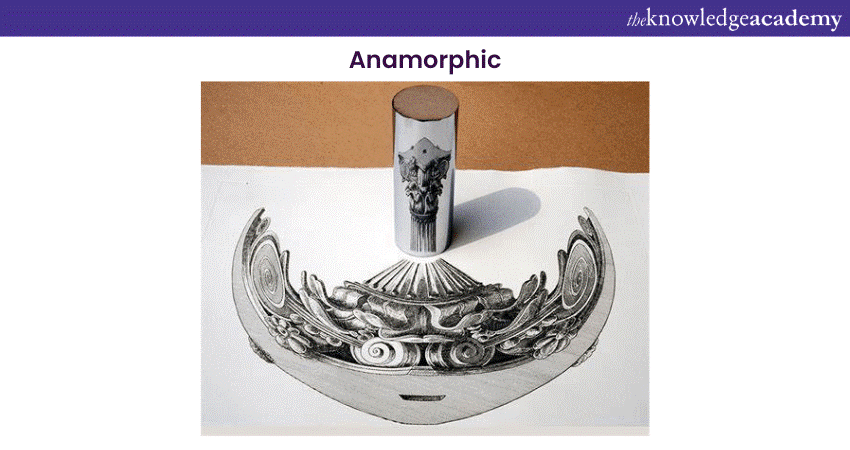
Anamorphic Drawings require careful planning and precise execution. Artists in this style play with perspective and optical illusions to create Drawings that interact with the viewer and the surrounding environment. Anamorphic Drawing adds an element of theatricality to the artistic experience, encouraging viewers to engage with the work from multiple angles.
Understand the significance of a logo and learn to design a customer-oriented logos with our Logo Design Training!
14) Gesture Drawing
Gesture Drawing is all about capturing the movement and energy of a subject in a few quick strokes. This style is often used in life Drawing classes to train artists to observe and convey the dynamic qualities of the human form. Gesture Drawings are spontaneous and fluid, emphasising the essence of a pose rather than intricate details.
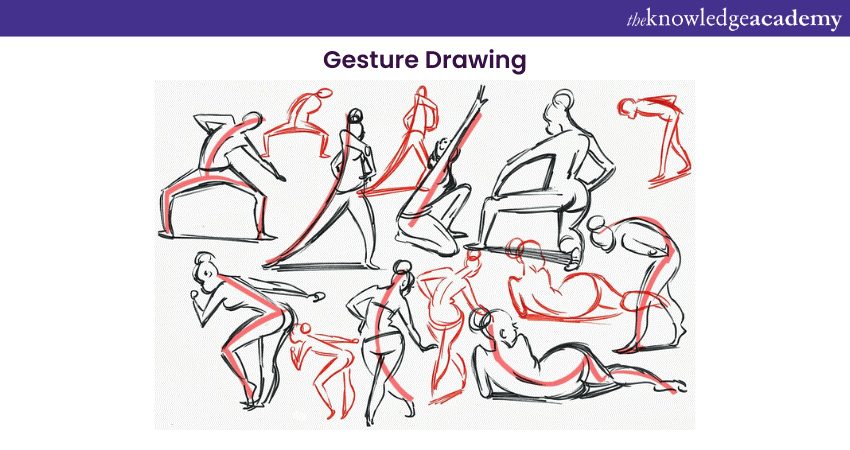
Artists use quick, gestural lines to convey the flow of movement, the tilt of the head, or the tension in a pose. Gesture Drawing is a valuable exercise for artists to develop their observational skills and capture the immediacy of a moment. This style is not concerned with achieving a finished and polished look but rather with conveying the vitality and rhythm of the subject.
15) Abstraction Drawing Styles
Abstraction in Drawing involves simplifying or distorting visual elements to create a non-representational or semi-representational image. Abstract Drawings can be highly expressive, with artists using colour, form, and line to evoke emotions and ideas. The conceptual Drawing Styles range from geometric to lyrical abstraction, each offering a unique visual language.
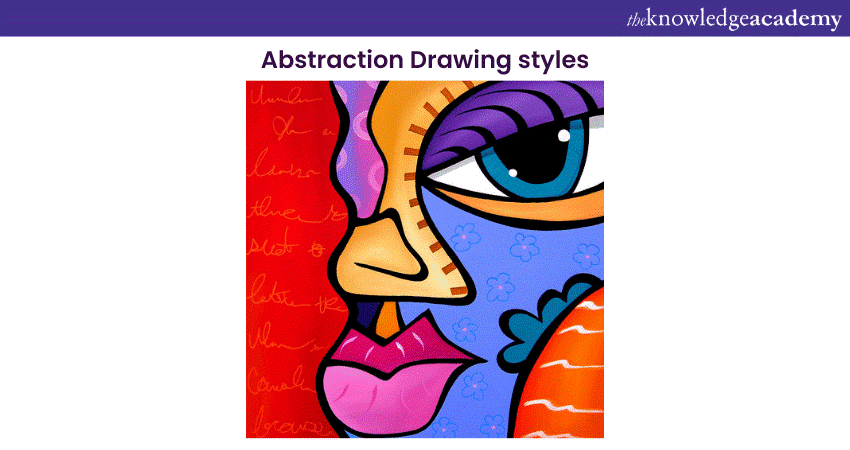
Geometric abstraction focuses on precise shapes and patterns, often using mathematical precision to create visually compelling compositions. Artists like Kazimir Malevich and Piet Mondrian are critical in developing geometric abstraction.
Lyrical abstraction, on the other hand, emphasises spontaneity and emotion. Artists in this style use gestural marks, vibrant colours, and fluid lines to create deeply personal and evocative works. Willem de Kooning and Joan Mitchell are celebrated for their contributions to lyrical abstraction.
16) Pop Art
Pop Art emerged in the mid-20th century as a response to the growing influence of popular culture. Artists like Andy Warhol and Roy Lichtenstein embraced imagery from advertising, comics, and everyday objects, elevating them to fine art. Bold colours, sharp lines, and irony and playfulness characterise Pop Art.

Pop artists often draw inspiration from mass-produced and widely recognisable images, blurring the lines between high art and popular culture. Andy Warhol's iconic Campbell's Soup Cans and Roy Lichtenstein's comic book-inspired works are emblematic of the Pop Art movement. This style challenges traditional notions of artistic subject matter, celebrating the everyday and the ubiquitous.
Attain in-depth knowledge of creating designs and graphics using Photoshop tools with Photo Retouching Training!
17) Cubism
Cubism, pioneered by Pablo Picasso and Georges Braque, is a revolutionary style that seeks to simultaneously depict a subject from multiple perspectives. This fragmented approach challenges traditional notions of representation, inviting viewers to engage with the artwork more deeply. Cubist Drawings often feature geometric shapes and a dynamic interplay of forms.
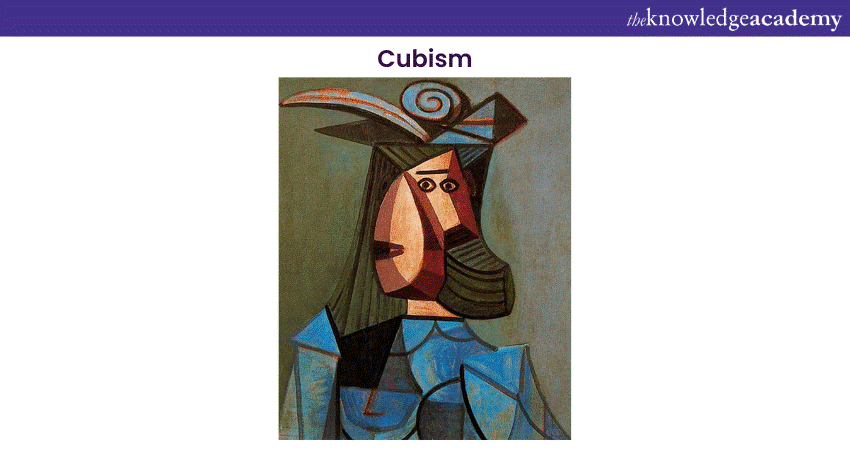
In cubist Drawing, objects and figures are deconstructed into facets and planes, creating a complex visual puzzle. This style encourages viewers to explore the relationships between different elements and consider multiple viewpoints simultaneously. Cubism is a significant departure from a traditional perspective, offering a new way of seeing and interpreting the world.
18) Realism
Realism in Drawing aims to depict subjects with high accuracy but without the hyper-detailed precision of hyperrealism. Artists in this style focus on capturing the beauty of everyday life, portraying subjects in a naturalistic manner. Realist Drawings often celebrate the mundane, inviting viewers to appreciate the subtle nuances of the world around them.

Realism is not about mere replication; it's about elevating ordinary moments to the realm of art. Artists in this style often choose subjects that resonate with the universal human experience, whether a portrait, a still life, or a scene from everyday life. Realism in Drawing celebrates the ordinary, a testament to the artist's skill in capturing the familiar with a fresh and insightful perspective.
19) Diagrammatic Drawing
Diagrammatic Drawing Style emphasises clarity and communication of ideas through visual representation. This style is often used in scientific illustrations, technical Drawings, and educational materials. Artists in this field use diagrams to convey complex information in a visually accessible format, making it an essential tool in various disciplines.
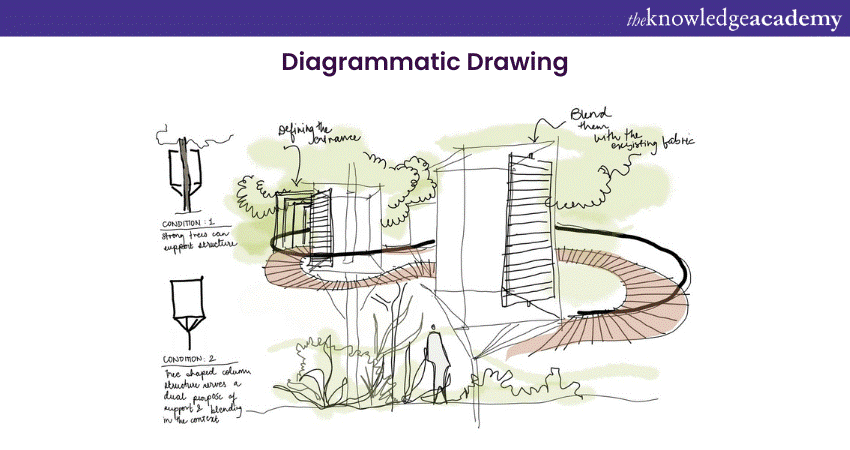
Diagrammatic Drawings are characterised by simplicity, precision, and a focus on conveying information efficiently. Whether illustrating biological processes, architectural plans, or technical concepts, diagrammatic Drawings distil complex ideas into clear and concise visuals. This style requires artistic skill and a deep understanding of the subject matter, serving as a bridge between art and science.
20) Scumbling
Scumbling is a Drawing technique that involves layering or rubbing a dry medium, such as charcoal or pastel, onto the paper's surface to create a textured effect. This style adds depth and atmosphere to the Drawing, with artists selectively applying and blending the medium to achieve the desired result.
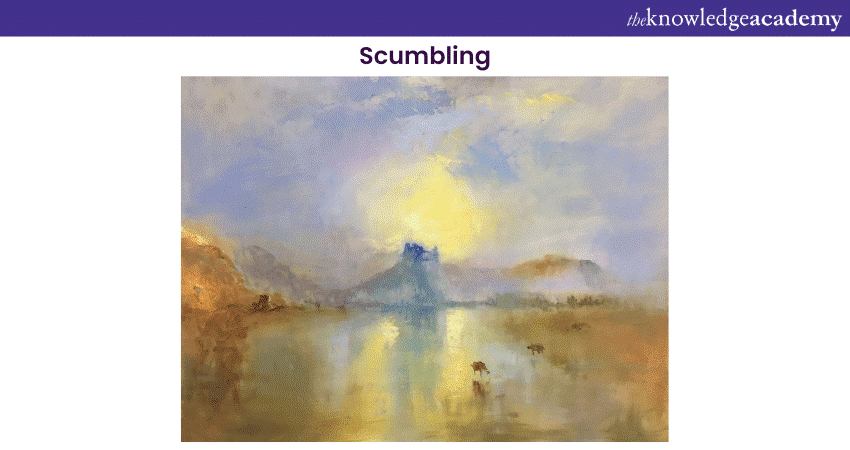
Scumbling is particularly effective in creating expressive and atmospheric Drawings. By building up layers of dry media, artists can develop a sense of depth and complexity in their works. This technique is often used in conjunction with others.
Gain an understanding of the drawing material and advanced styles with our Drawing Masterclass!
Conclusion
Engaging in Drawing offers an accessible and highly rewarding avenue for artistic expression. The myriad approaches to capturing the essence of our surroundings on flat surfaces provide ample opportunities to elevate your creative process. Regardless of your proficiency in Drawing, continuous improvement is possible through exploring new styles and leveraging advanced technology. Various Drawing Styles appeal to diverse audiences, and exploring different approaches might uncover fresh inspiration for your artistic journey.
Recommended for any individuals who use or want to use Articulate Storyline with our Articulate Storyline Training Masterclass!
Frequently Asked Questions
Upcoming Office Applications Resources Batches & Dates
Date
 Animation Course
Animation Course
Fri 17th Jan 2025
Fri 7th Mar 2025
Fri 23rd May 2025
Fri 18th Jul 2025
Fri 12th Sep 2025
Fri 12th Dec 2025







 Top Rated Course
Top Rated Course



 If you wish to make any changes to your course, please
If you wish to make any changes to your course, please


